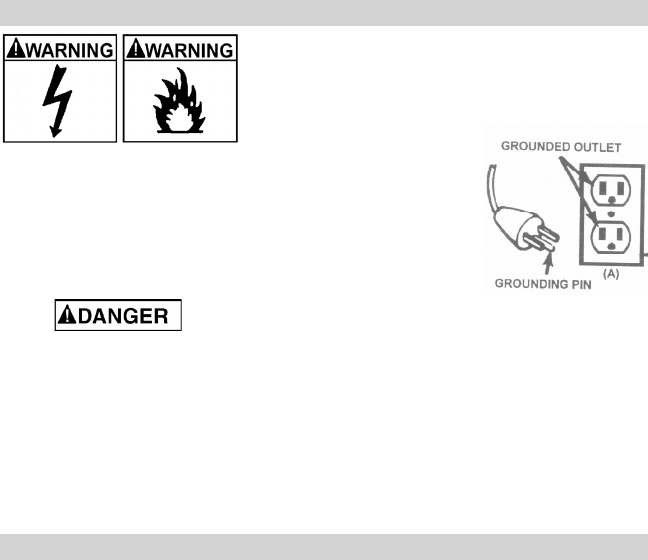
• 6 •
Donotfacethebatterywhenmakingthenalconnection.7.5
Connect charger AC supply cord to electrical outlet.7.6
When disconnecting the charger, always do so in the reverse order of the 7.7
connectingprocedureandbreaktherstconnectionwhileasfarawayfromthe
battery as practical.
Amarine(boat)batterymustberemovedandchargedonshore.Tochargeit7.8
onboard requires equipment specially designed for marine use.
GROUNDING AND AC POWER CORD CONNECTIONS8.
RISK OF ELECTRIC SHOCK OR FIRE.
This battery charger is for use on a nominal 120-volt 8.1
circuit and has a grounded plug that looks like the plug
illustrated. The charger must be grounded to reduce
the risk of electric shock. The plug must be plugged
into an outlet that is properly installed and grounded in
accordance with all local codes and ordinances. The
plugpinsmusttthereceptacle(outlet).Donotusewith
an ungrounded system.
8.2 NeveraltertheACcordorplugprovided–ifitdoesnott
theoutlet,haveapropergroundedoutletinstalledbyaqualiedelectrician.An
improper connection can result in a risk of an electric shock or electrocution.
NOTE: Pursuant to Canadian Regulations, use of an adapter plug is not
allowed in Canada. Use of an adapter plug in the United States is not
recommended and should not be used.
Recommended minimum AWG size for extension cord:8.3
100 feet long or less - use a 16 gauge extension cord.•
Over 100 feet long - use a 14 gauge extension cord.•
ASSEMBLY INSTRUCTIONS9.
Remove all cord wraps and uncoil the cables prior to using the battery charger. 9.1
Included with your charger are two cord wrap cleats for storage of the clip 9.2
cables. To install, align the two tabs with the two receptacles on the back of the
charger and push until you hear a snap.


















